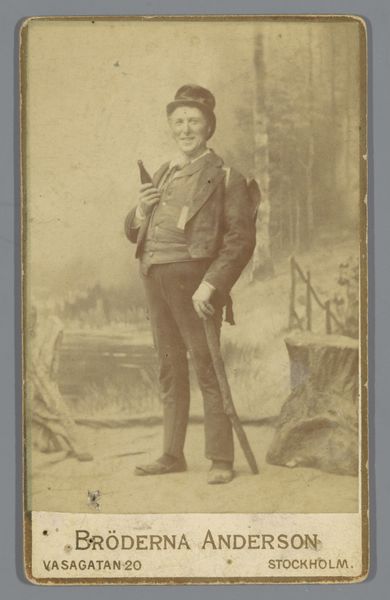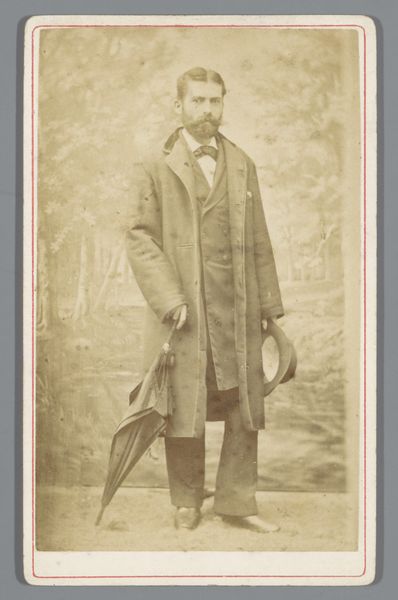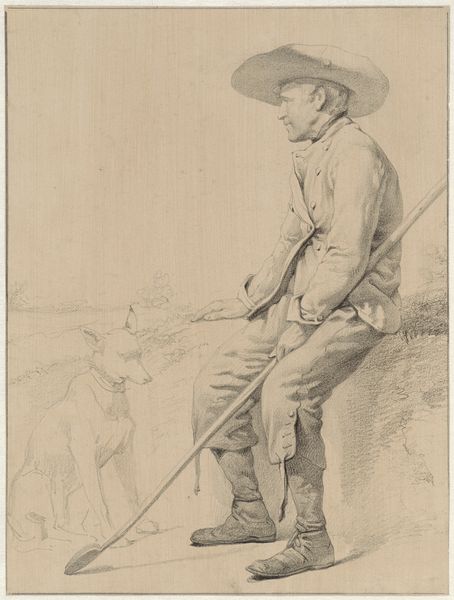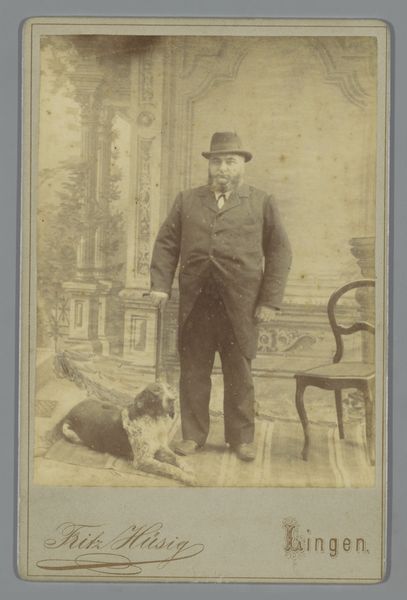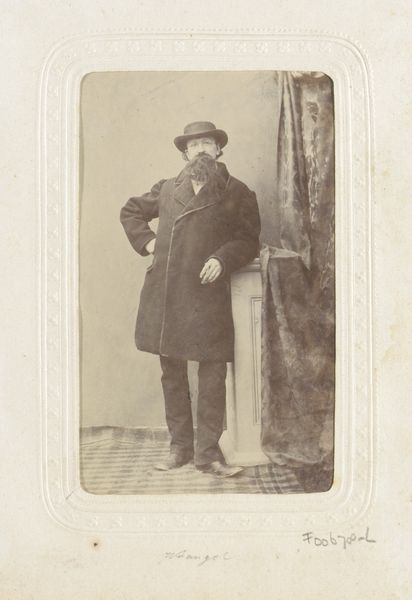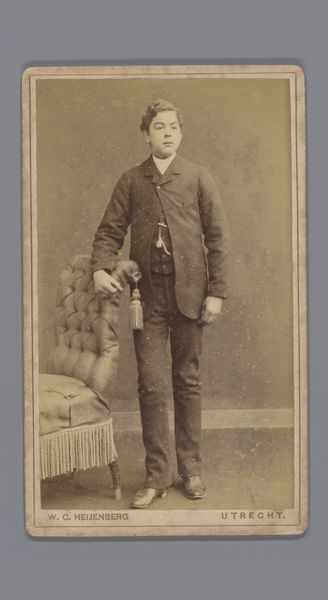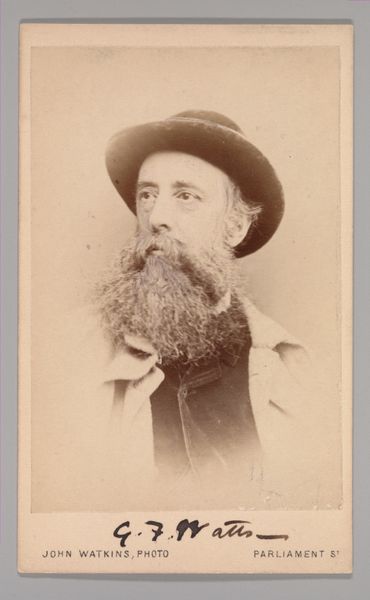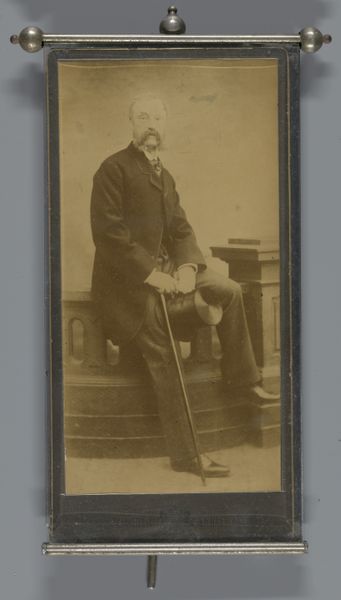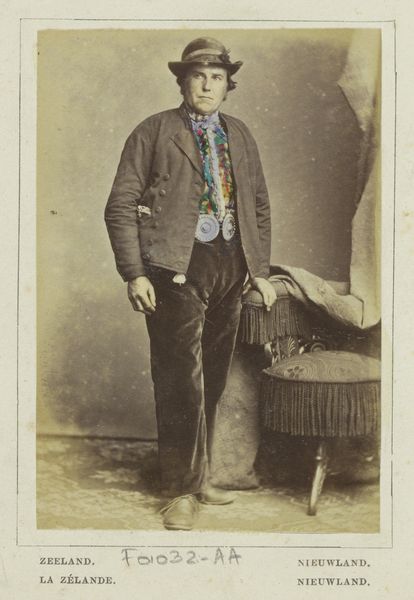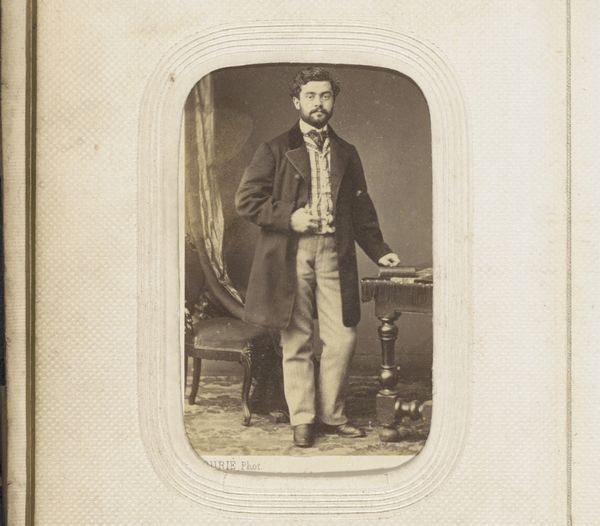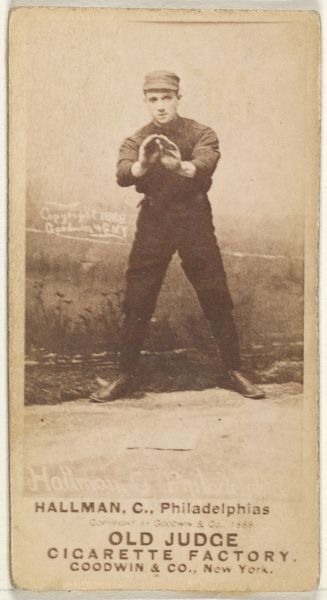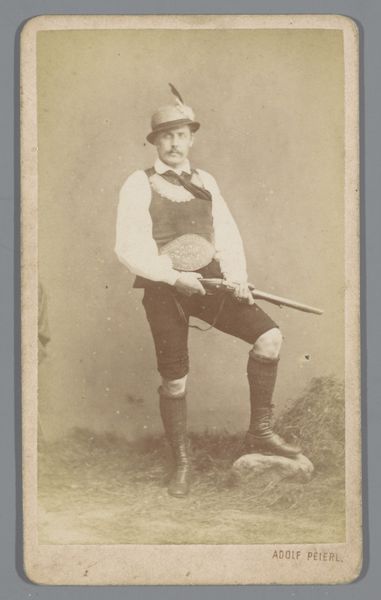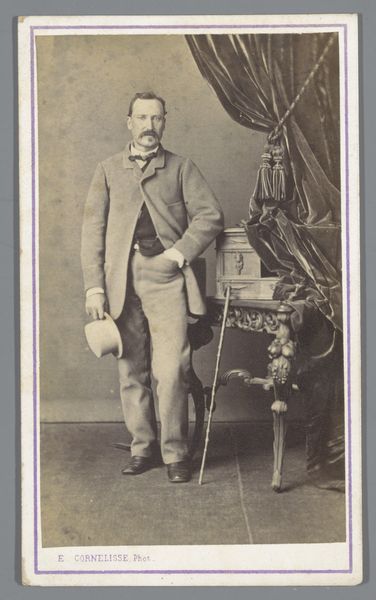
Dimensions: height 148 mm, width 100 mm
Copyright: Rijks Museum: Open Domain
Editor: Here we have "Portret van een onbekende man in een jagerskostuum met een hond," or, "Portrait of an Unknown Man in Hunting Costume with a Dog" by Emil Becher, a gelatin silver print from around 1870 to 1900. The sepia tones give it such a nostalgic, almost dreamlike quality. What symbols do you see at play here? Curator: A hunting portrait from this era is ripe with symbolism. Consider the dog, not just a pet, but an emblem of loyalty, fidelity, and companionship; often linked to concepts of guidance and protection. Editor: It's interesting that you point that out; I see that immediately. What does this pairing tell us about the subject? Curator: Well, his hunting attire signals dominion over nature, a display of status. But it’s the *act* of posing with his dog, in a controlled environment, which becomes significant. This union captures a certain tension: Man and animal in partnership. One is reminded that the symbiosis of man and animal underscores their connection. Editor: So the portrait isn’t just about a hunter, but a reflection on our relationship with the natural world? Curator: Precisely! Ask yourself, how might our understanding of nature—wild, domestic, and everything in between—change when viewing this in today’s context, far removed from the world of 19th-century hunting culture? The man seems almost romantic, this hunter. It is an exercise in nostalgia, of a certain cultural memory. Editor: I never would have considered all that just by looking at it. Now I'm wondering how people in the late 1800s might have reacted! Curator: Indeed. And now you're participating in a long line of interpreting that image for your own time!
Comments
No comments
Be the first to comment and join the conversation on the ultimate creative platform.
